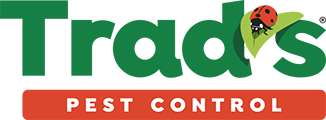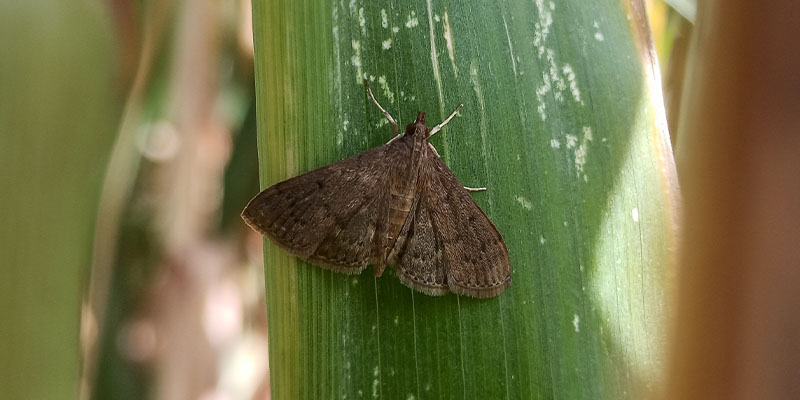The tropical sod webworm (Herpetogramma phaeopteralis) is a common lawn pest that can cause significant damage to St. Augustine turf, a popular grass species in tropical and subtropical regions. Understanding the behavior of tropical sod webworms and implementing preventive measures is essential for homeowners seeking to protect their lawns from infestations.
The Insidious Tropical Sod Webworm: Understanding, Prevention, and Control for Healthy Lawns
In this article, we will delve deep into the characteristics of tropical sod webworms, their attraction factors, reproductive habits, potential damage to St. Augustine turf, and effective prevention steps for homeowners. So, read on to learn more about this particular pest and how to deal with it.
What are Tropical Sod Webworms Anyway?
Tropical sod webworms are small, light brown, or grayish moths with a wingspan of approximately 1 inch (2.5 cm). The adult moths are not the primary cause of concern for homeowners; instead, it is the larvae, which are caterpillar-like pests, that feed on turf grasses.
Tropical Sod Webworm Reproduction and Lifecycle
Tropical sod webworms have multiple generations within a year, with peak activity occurring during warm and humid months. The moths lay their eggs on grass blades and once hatched, the larvae feed on the turfgrass foliage. The larvae go through several growth stages (instars) before pupating and eventually emerging as adult moths.
Attraction Factors for Tropical Sod Webworms
Tropical sod webworms are attracted to warm, moist conditions. They are also attracted to lawns that are not well-maintained, such as lawns that are not mowed regularly or that are not fertilized. Tropical sod webworms are attracted to certain conditions and factors that make lawns more susceptible to infestation, including:
- Lush turf. Well-fertilized and healthy lawns with dense growth can attract tropical sod webworms. The lush turf provides an abundant food source for their larvae.
- Overwatering. Excessive irrigation or poor drainage can create moist conditions that favor tropical sod webworm infestations.
- Shaded areas. Webworms prefer areas with partial shade as it provides a more favorable environment for their growth and feeding.
Although the tropical sod webworm prefers St. Augustine grass, these hungry creatures will also feast on a few other lawn species, including but not limited to centipedegrass, bahiagrass, bermudagrass, and zoysiagrass. So, just because a yard doesn’t contain St. Augustine doesn’t mean it won’t be attractive to these destructive pests.
Damage to St. Augustine Turf
The larvae of tropical sod webworms are voracious feeders, causing visible damage to St. Augustine turf. The signs of infestation include the following:
- Thinning and yellowing of turf. The larvae feed on grass blades, resulting in thinning patches and yellow or brown discoloration.
- Notched leaf edges. Tropical sod webworm larvae chew irregular, ragged edges on the grass blades.
- Visible silken webs. In severe infestations, you may notice silk webs near the soil surface, particularly in the early morning.
Tropical sod webworms can also cause the grass to suffer from brown patches and faded coloring. Additionally, these pests will leave behind unsightly bright green piles of caterpillar droppings all over the lawn.
Steps to Prevent Tropical Sod Webworms
Preventing tropical sod webworm infestations is crucial to maintaining a healthy lawn. First and foremost, take a little time to inspect your lawn regularly for signs of infestation. If you see any brown, dead patches, take action immediately to control the pests with the following steps:
- Proper lawn maintenance. Implement good lawn care practices, including regular mowing, appropriate watering, and proper fertilization to promote a healthy and robust turf that is more resistant to pests. Also, be sure to water your lawn deeply and infrequently. This will help to prevent the soil from becoming too moist, which can attract the moths. Also, aerate your lawn. Aerating the soil will help to improve drainage and reduce moisture levels, which can help to discourage the moths from laying their eggs.
- Reduce shade. Trim back overhanging trees and shrubs to allow more sunlight to reach the lawn, making it less attractive to tropical sod webworms.
- Monitor lawn conditions. Regularly inspect the lawn for signs of webworm activity, such as notched leaf edges, thinning turf, or silk webs. Early detection enables prompt action.
- Biological controls. Encourage natural predators, such as birds, spiders, and wasps, by providing suitable habitats, like birdhouses or insectary plants, to help control tropical sod webworm populations.
- Insecticides. If infestations are severe, insecticides labeled explicitly for tropical sod webworm control can be used. Follow the instructions carefully, and consider consulting with a professional if needed.
In addition to the above strategies, use Integrated Pest Management (IPM). Implement an integrated approach by combining preventive measures, regular monitoring, and targeted treatments when necessary. IPM focuses on long-term pest prevention with minimal environmental impact.
Summing Everything Up
Understanding the behavior and lifecycle of tropical sod webworms is essential for homeowners seeking to protect their St. Augustine turf. By implementing proper lawn maintenance practices, reducing shade, regularly monitoring lawn conditions, encouraging natural predators, and considering targeted insecticide applications when necessary, homeowners can effectively prevent tropical sod webworm infestations. By taking proactive steps, homeowners can maintain healthy and vibrant lawns while minimizing the damage caused by these persistent pests.
If you suspect you may have a problem with tropical sod webworms or any other pest – be it insects or rodents or something else – just get in touch with us at your convenience. Our experienced, expert technicians will assess your property and recommend the most effective and appropriate treatments.

